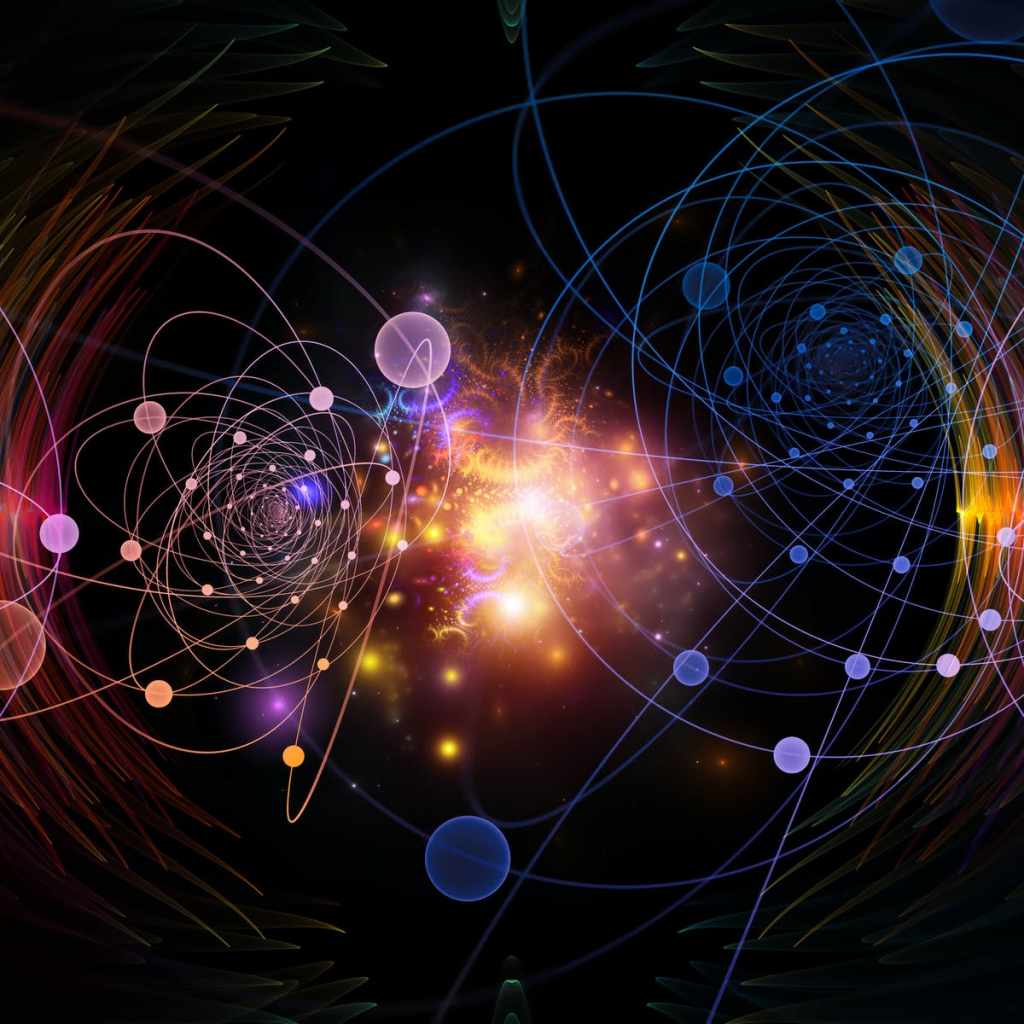What Is Quantum Physics

We have often talked about quantum physics, for example, talking about virtual realities, time travel, and particles that die before they are even born.
These are concepts that can scare prejudiced people because they are part of “science” and “novelty,”; but after all, we have to get over it: quantum physics has entered our life and will be increasingly present; think, for example, of quantum computers, which have now become a reality (albeit still as prototypes understudy).
In this article, we will see that the basic concept is not that difficult to understand. Indeed, at the end of the reading, you will discover that quantum physics is fascinating, full of potential and that it holds a mystery yet to be discovered.
Explaining the basics of quantum physics in simple words is possible. Fabrizio Coppola, in chapter three of his The Secret of the Universe, does so in an admirable way, with examples so clear that even a “mere mortal” not very used to science can follow. Let us realize, however, that one question is explaining what quantum is, and another question is why it works how it works. In this case, it is a huge undertaking, given that scientists are also on the high seas.
Below I will have to use some terms typical of quantum mechanics, but they will be carefully explained with examples. Precisely because I am trying to make the subject as simple as possible, the more experienced will find some approximations and terms that are not entirely appropriate, used mostly to give an idea understandable to the reader.
Table of Contents
What is quantum physics: wave-particle duality
The wave-particle dualism is the main cause of questioning all the classical physics theories developed up to the 19th century.
This phenomenon cannot be explained with the corpuscular theory but with the wave theory. Two waves of the same amplitude can be in-phase and if they interfere. They originate a sine wave, which is the sum of its component sinusoids; however, they can be in counter phase, and, if they interfere, they generate a null wave.
Meanwhile, in 1803 atoms were considered the fundamental constituents of matter. In 1874 G. Stoney discovered the electron and then Rutherford. The atomic nucleus, positively charged, is surrounded by negatively charged electrons like the sun in the middle of the solar system’s planets, following Maxwell’s electromagnetic theory on charges in accelerated motion. It was concluded that the atom should have collapsed. Instead, the matter we observe continuously is stable at the turn of the nineteenth and twentieth centuries. The study of the photoelectric effect was challenged. The completeness of classical mechanics, suggesting that electromagnetic radiation had a double wave and corpuscular behavior during interaction with matter.
What is quantum physics: photoelectric effect
In fact, in certain situations, as Einstein highlighted in 1905 with the hypothesis of the photon in the photoelectric effect. The photoelectric effect is the phenomenon that occurs with the emission of electrically charged particles by a body exposed. To be able to tear an electron from a metal surface. The photon’s energy must be greater than the electron’s binding energy in the metal (W). On the other hand, the photon’s energy is less than W. There is no photoelectric effect, and the ammeter does not register the current passage. However, the classical wave theory predicted that as the intensity of the incident light increases, the emitted electrons’ energy increases.
What is quantum physics used for
In 1902, the German physicist Philipp Lenard showed instead that the energy of photoelectrons did not depend. On the intensity of illumination, but the frequency (or wavelength) of the incident radiation. The intensity of the radiation instead determined the intensity of the current. The experimental result was inexplicable, considering that the nature of light was the only wave.
In 1905 Albert Einstein explained the photoelectric effect with the hypothesis that light rays carried particles, called photons. Whose energy is directly proportional to the corresponding wave frequency: hitting the surface of a metal body. Photons give part of their energy to free electrons of the conductor, causing the emission. Then the energy of the released electron depends only on the energy of the photon. Simultaneously, the radiation’s intensity is directly related ted hehe number of photons transported by the wave and, therefore, can affect. The number of electrons extracted from the metal, but not their energy. It was hard to believe that light exhibited some duality. Appearing as a wave or a particle depending on the experiments. De Broglie, in 1924 hypothesized that all matter manifested the same dualism.
Also Read: Top 4 Irresistible Reasons To Invest In ETFs
The double-slit experiment
In 1927 Davisson and Germer had experimental proof of this behavior. They observed diffraction patterns by making an electron beam pass through a nickel crystal (diffraction is a phenomenon associated with the deviation of waves’ propagation trajectory when they encounter an obstacle on their I walk). Hence the possibility of using particle beams. To perform interference experiments with two slits, just as Young had done with light.
The two slits experiment allows us to demonstrate the wave-particle duality of matter. Richard Feynman repeated that this experiment was the key to understanding quantum mechanics. The light, therefore, responds perfectly to Newton’s corpuscular theory. According to the corpuscular theory, trying to predict which figure would result from the simultaneous opening of both slits. The simple superimposition of the two previous figures would occur. The light behaves like a mechanical wave: on the photographic plate. The wee ewe would have in some points overlapping peaks or bellies, in other cancellations. This unequivocally demonstrates the existence of wave-particle dualism, both of matter and electromagnetic radiation.
Niels Bohr also introduced the principle of complementarity. According to which the two aspects, corpuscular and wave. It cannot be observed simultaneously because they are mutually exclusive, i.e., the type of experiment. Determines the subsequent behavior of the particles involved in it.
Also Read: Why Choose Headphones Over Earphones?
IS THE FATE FORESEEABLE?
How can we forget, for example, Maradona’s punishments? The trajectories impressed on the ball were an admirable match between sport and physics. However, if a hypothetical quantum “Pibe de Oro” were to find an electron between its feet, it would not be able to kick it with the same precision. That “ball,” in fact, would not follow the deterministic logic of shot-goal.
Thanks to the principle of superposition of states, in fact, it could be at any point in the field. Spreading like a fog in several places at the same time. In short, fate is not predictable.
Quite the opposite of what they claimed in the fifth century. To. C the Greeks Leucippus and Democritus, according to whom. Quantum mechanics, on the other hand, albeit on a completely different basis, is closer to the thought of Epicurus.
Classical physics and quantum physics
We know that everything in existence is made up of molecules made up of atoms and so on. If we continue to divide the particles, we will arrive at some point in the quantum. The quantum is such a small particle that it cannot be split (unlike, for example, the atom, which can be split into protons, neutrons, and electrons).
You read that right: paradoxes. In fact, surprises are around the corner.
In classical physics – the one we study at school, so to speak – we can always accurately measure an object: its speed, its energy, its position at a certain moment, etc.
Imagine a runner: at each lap of the field, we can stop the clock and know exactly how long it took to complete the course. We could know precisely how fast he went through physical formulas, and even where in the field he will be in 10 seconds if he keeps the same speed.
What is quantum physics? Classical physics
With quantum physics, all this is not possible. When we talk about how many, we can only describe a “rose of possibilities.” Taking the example of the runner, we will never know exactly what his position is using formulas (i.e., without measuring him directly). Instead, we will have a series of positions in which he could be found. The runner has a certain probability of being in one of these positions.
In quantum physics, it is said that a quantum is found in a Hilbert space, that is, in a “space of possibilities” and an “indefinite state.” In other words, there is a probability that the quantum lies at point A or point B, but we will never be sure where it is until we measure it.
How then do we determine its location? Simple: we measure it (using laboratory tools). As soon as we observe it, it is as if the quantum “decides” which position to take among the various possible positions. In a bit more technical language, it is said that at the moment of observation, the “state collapses into one of the potential eigenstates” – whereby eigenstates we mean, precisely, those states that allow precise measurement of what we observe.
Who decides what position a quantum should take when we observe it?
In summary, the quantum has the probability of being in certain positions, and only when we observe it does it “decide” to take a specific position.
Who decides what position the quantum should take once observed?
The answer is that physics cannot explain it. He is unable to predict in any way what the chosen position will be. This is why we speak of the uncertainty principle. So far, we have talked about “position.” Still, it is an inappropriate term, and we will have had to talk more about “eigenvalues” because the measurement can concern different properties of the quantum: its position, its speed, etc. Whatever property we are trying to measure, it will be indeterminate (i.e., within a range of possibilities) until we observe it.
There’s more. As we have said, we can obtain a position, velocity, etc. from “common” particles at the same time. But if we try to measure the position and velocity of quantum simultaneously, we won’t be able to. Either we measure the position, or we measure the speed: the other value will remain, however, undetermined.
The next question that comes to mind is: if he cannot predict the behavior of quanta, how does the scientist use quantum physics on concrete things, for example, to create quantum computers? The fact is that, while we have indeterminate results for individual particles, we can still predict the collective behavior of a system (i.e., of millions or billions of quanta acting together).
Conclusion
The question seems absurd, and scientists have been trying for years to find out what sets in motion the final “choice” that the quantum assumes, that is, to understand what drives it to assume one of the many possible eigenvalues.
So far, they have not been successful, but we know that great discoveries occur over time with continuous attempts. Before the 1920s, measurements were always thought to be objective, valid regardless of whether there was an observer. Do you think that there have been verbal clashes between pro and con scientists? Einstein himself, who had contributed to the birth of quantum theory, had initially rejected this “absurd and non-objective idea.” Einstein did not accept the case’s intervention and, in fact, his famous phrase: “God does not play dice with the world.”
In response, Bohr, a supporter of the theory, replied that “It is not the task of scientists to tell God how the world works, but only to discover it.”
We have only one certain question (until proven otherwise): the observer’s influence collapses the quantum into its eigenstate. It is like saying that we are the ones who determine the behavior of quanta and, by extension, of all the matter that surrounds us, from the smallest grain of sand to the immense galaxies of the universe. If we can make the quanta decide what value to make, shouldn’t we admit that free will exists for humans? The question is interesting, and it is worth dedicating a separate article to it.
Also Read: Why You Need a Japan Sim When Travelling to Japan







